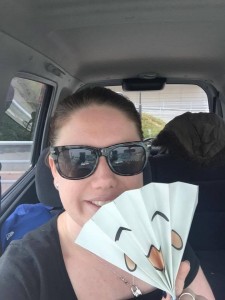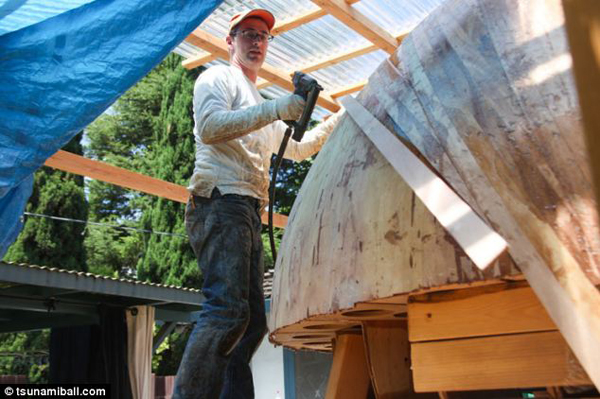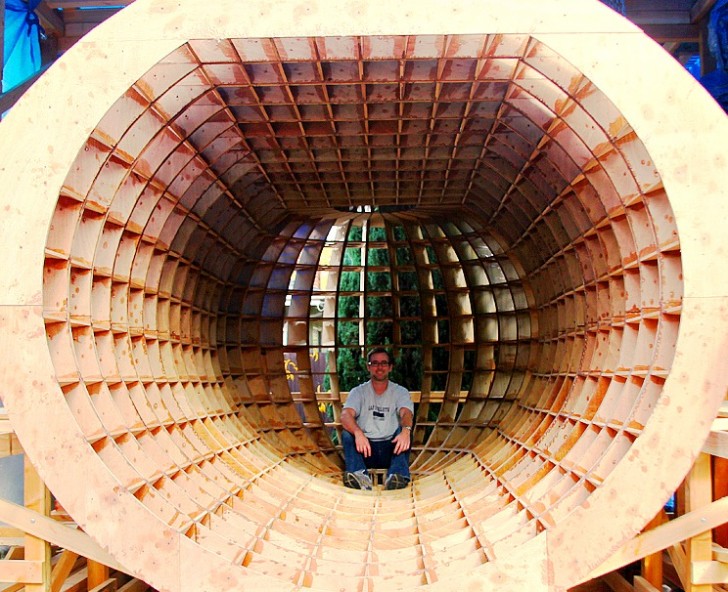Krewe of Japan Podcast Launch! New Episode 3/12 ft. JET Alumni Wesley Julian & Dan Martin
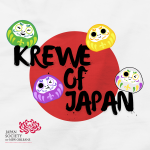
Posted by: Doug Tassin (Fukushima-Ken ALT, 2007-2010 & Krewe of Japan Podcast Co-Host)
Sponsored by the Japan Society of New Orleans, the Krewe of Japan Podcast launched a new weekly episodic podcast in February 2021. But what is a “krewe”? A krewe is an organization that stages a parade or event for the New Orleans Carnival season. Much like a Mardi Gras parade with diverse entertainment and an overarching theme, this Krewe is about to march right into the podcast library of those not only in New Orleans but those around the globe. Through insightful and entertaining conversations with a variety of experts and professionals (both foreign and native Japanese), Japan enthusiasts, and others in various fields involving Japan, the Krewe of Japan Podcast will highlight a broad spectrum of Japanese culture, travel, history, language and much more. Past and soon-to-be-aired guest interviews include (but not limited to):
- Matt Alt, accomplished writer/translator/localizer based out of Tokyo who wrote the book Pure Invention
- MattVsJapan, a popular YouTube language show host who has his own Japanese learning methodology called Refold
- Shoko & Bon Koizumi, the great-grandson of the esteemed 19th century literary figure Lafcadio Hearn (Japanese name: Koizumi Yakumo)
- Andrew Freund, director of USA Sumo
- Dr. Samantha Perez, history professor at Southeastern Louisiana University and coordinator of the Matsue-New Orleans Sister City Exchange Program
- Saeko Yatsuka-Jensen, a Japanese professor from Tulane University
- A joint conversation on English teaching opportunities in Japan with John Loynes (former JET, privately-owned Eikaiwa entrepreneur) & Bradley Trenery (Private English Instructor)
This week’s episode (dropping tomorrow, March 12) will feature an interview with a couple JET Program alumni, Wesley Julian and Dan Martin. Wesley and Dan produced the fantastic documentary about the global community’s response to the Great East Japan Earthquake called Tohoku Tomo and its “follow-up” docuseries highlighting all that Tohoku has to offer called The 113 Project. They shared a behind-the-scenes look into the making of Tohoku Tomo and The 113 Project, their insights and experiences with Japan both before and after the tragic day of March 11, 2011, and how you can still help Tohoku with its recovery.
The Krewe of Japan Podcast can be found on Apple, Google, Spotify, Amazon, and Stitcher. Missing your platform? Have ideas for episodes, feedback, comments, or questions? Let the Krewe know by e-mail at kreweofjapanpodcast@gmail.com or on social media (Twitter: @kreweofjapan, Instagram: @kreweofjapanpodcast, & the Krewe of Japan Youtube Channel).
JQ Magazine: Book Review — ‘The Seed of Hope in the Heart’

Although The Seed of Hope is a memoir of one man’s experiences during a challenging period in recent Japanese history, it is also a fascinating look into how the people of Tohoku struggled but fought to rebuild their lives. (Amazon Digital Services LLC)
By Rashaad Jorden (Yamagata–ken, 2008-10) for JQ magazine. A former head of the JETAA Philadelphia Sub–Chapter, Rashaad is a graduate of Leeds Beckett University with a master’s degree in responsible tourism management. For more on his life abroad and enthusiasm for taiko drumming, visit his blog at www.gettingpounded.wordpress.com.
There are certain moments we remember clearly as if they happened only yesterday, whether they are monumental historical events or natural disasters. But how would you tell stories centering on those moments?
Teiichi Sato has a go at it in The Seed of Hope in the Heart. In the memoir, Sato, an Iwate Prefecture seed shop owner, survives the 2011 Tohoku earthquake and tsunami but sees his beloved seed shop crumble. This plunges him into the task of rebuilding his life and livelihood amidst destruction while trying not to sink into depression and despair.
It all started with the disaster that struck on March 11, which didn’t actually come out of the blue. Sato explains that after a strong earthquake hit the Kesen area two days prior, a tsunami advisory was issued, which wasn’t really cause for a cause for concern as “weak” tsunami advisories were frequent around Rikuzentaka (where Sato lived).
But obviously, it should have been as for much of Tohoku, the world changed starting on 2:46 p.m. on March 11. Sato spends much of the early chapters detailing not only his perspective of the earthquake, but more dramatically his escape from the oncoming tsunami. While reading The Seed of Hope, you get the sense of being transported into a movie as it contains no shortage of drama as Rikuzentaka’s citizens make a desperate dash to find shelter—some of whom aren’t able to do so successfully.
WIT Life #302: New York Japan Cinefest
WIT Life is a periodic series written by professional Writer/Interpreter/Translator Stacy Smith (Kumamoto-ken CIR, 2000-03). She starts her day by watching Fujisankei’s newscast in Japanese, and here she shares some of the interesting tidbits and trends along with her own observations.
Last week I had a chance to check out the 5th annual New York Japan Cinefest, whose mission is to introduce Japanese themed films and discover new talent in filmmaking. In the past I have attended this festival hosted at Asia Society and always loved it, and this year too did not disappoint. I made it to the first night of this two night event, which showcased six short films varying in length from 5 to 40 minutes.
I was most lookin g forward to the final film A Beautiful Person, as it was the newest work from the Kumamoto-born director Isao Yukisada and featured a cast exclusively from Kumamoto (with an appearance from the ubiquitous Kumamon!). I had to laugh once they started speaking as the dialogue was in heavy Kumamoto dialect, adding to the film’s authenticity. The story didn’t captivate me as much as I had hoped it would, but it was like a time capsule as it had been filmed pre-earthquake. Especially after recently going back to Kumamoto and witnessing the horrible damage the castle has undergone, it was really special to see Read More
g forward to the final film A Beautiful Person, as it was the newest work from the Kumamoto-born director Isao Yukisada and featured a cast exclusively from Kumamoto (with an appearance from the ubiquitous Kumamon!). I had to laugh once they started speaking as the dialogue was in heavy Kumamoto dialect, adding to the film’s authenticity. The story didn’t captivate me as much as I had hoped it would, but it was like a time capsule as it had been filmed pre-earthquake. Especially after recently going back to Kumamoto and witnessing the horrible damage the castle has undergone, it was really special to see Read More
WIT Life #300: Kumamoto earthquakes
WIT Life is a periodic series written by professional Writer/Interpreter/Translator Stacy Smith (Kumamoto-ken CIR, 2000-03). She starts her day by watching Fujisankei’s newscast in Japanese, and here she shares some of the interesting tidbits and trends along with her own observations.
Over a week has passed since the earthquakes down in Kyushu, and things have settled down somewhat but it is still a very scary situation. I spent my time on JET in Kumamoto, so this unexpected disaster was especially hard-hitting. I have a business trip to Tokyo next month, so I’m planning to go down to Kyushu during that time to help out with recovery efforts. It’s hard to be so far away and not be able to do much, but at this point due to the instability the best way to help seems to be donations.
In that vein, here are links to two organizations that are currently accepting contributions. The first is a fund created by the Japanese American Association of NY (JAA, hosting its Sakura Matsuri from 11 am-1 pm at Flushing Meadows Park tomorrow!) devoted exclusively to Kyushu Earthquake Relief (www.jaany.org), and the second is Japan Society’s general Earthquake Relief Fund (www.japansociety.org/page/earthquake).
Finally, here’s the song Kumamoto produced by NY-based jazz pianist Senri Oe and featuring Mamiko Taira on vocals. He wrote this haunting tune right after the disaster as a way to deal with his feelings of helplessness. He describes this music as his own way of providing relief goods, as unlike other supplies a song won’t spoil nor can there be too much or too little of it. It might be just what some people are looking for, and can be accessed by anyone via the Internet. In the spirit of the potential solace it offers, enjoy.
JQ Magazine: 3/11 — Where We Stand Five Years Later
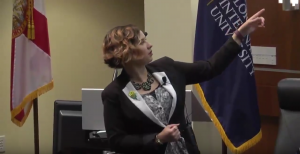
Bahia discusses the earthquake that struck Japan on March 11, 2011 at Florida International University, March 8, 2016. (Courtesy of Bahia Simons-Lane)
By Bahia Simons-Lane (Gunma-ken, 2005-07) for JQ magazine. Bahia taught at an all-girls’ high school on JET, and following her time on the program she held the position of ALT Advisor for the Gunma Board of Education from 2007-08. Bahia earned her master’s degree in International and Intercultural Education and certificate in Asian Studies from Florida International University in 2014, and is currently pursuing her Ph.D. in Curriculum and Instruction, Language, Literacy, and Culture. She is president of the Florida chapter of the JET Alumni Association.
On March 11, 2011, I woke up like it was any other day, but minutes after I walked downstairs I realized it wasn’t. Two of my friends were staying with me at the time. When we came downstairs the first thing they said to us was, “Did you hear about what happened in Japan?” We spent the rest of the day glued to the Internet and TV, horrified and shaken by the devastation caused by the earthquake and tsunami. That was five years ago.
This March 11 marked the five-year anniversary of the triple disaster that devastated the Tohoku region of Japan. The earthquake and subsequent tsunami killed thousands of people with many more displaced from their homes. Yet, like with many disasters over time, people stop thinking about what happened and it fades into the background. With the five-year anniversary approaching, I realized that I hadn’t heard a lot about how the Tohoku recovery was progressing. I knew that those without strong ties to Japan had probably forgotten all about the disaster entirely. It was time to look into how the recovery had progressed and share it with students at Florida International University who may not know much about the disaster, so I pitched the idea to the organizer of the Tuesdays Times Roundtables (TTRs) and it was agreed that it would be a great addition to the spring lineup.
FIU’s Office of Global Learning presents TTRs every week in conjunction with the New York Times. I proposed the talk for the March 8 roundtable, which seemed like perfect timing to discuss the 3/11 earthquake. The TTRs are a series of talks that focus on news items published in the New York Times and offers a closer look at some of the articles and the issues they address. The TTRs are usually well attended, and my talk was no exception, with approximately 40 people in attendance. Mostly students, they were avid listeners who asked interesting questions and made insightful comments (view the video of the complete presentation for more).
JQ Magazine: Book Review — ‘Up from the Sea’
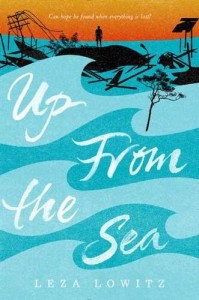
“If you’re interested in new perspectives of March 11, Up from the Sea is an easy read that might open eyes to the perseverance and strength of Tohoku’s residents.” (Crown Books for Young Readers)
By Rashaad Jorden (Yamagata-ken, 2008-10) for JQ magazine. A former head of the JETAA Philadelphia Sub-Chapter, Rashaad is a graduate of Leeds Beckett University with a master’s degree in responsible tourism management. For more on his life abroad and enthusiasm for taiko drumming, visit his blog at www.gettingpounded.wordpress.com.
The afternoon of March 11, 2011 brought unprecedented destruction along the Tohoku coast and challenges that many locals have struggled to overcome even up to this day. The survivors’ stories have been told many times since then. Now, young readers get another glimpse into that day and life in the disaster-stricken area.
Inspired by a young boy she met in the disaster zone, Leza Lowitz pieces together the events of that fateful Friday to create Up from the Sea, a fictional story (although based on the events of March 11 and its aftermath) about Kai, a teenager who uses soccer to rally his community. Up from the Sea also includes a trip Kai and others made to New York to commemorate the tenth anniversary of September 11.
Lowitz writes Up from the Sea as a verse novel instead of in prose, which makes the story a much quicker and easier read. It’s divided into three major chapters—each titled after a season of the year—that document the journey from the havoc caused by Mother Nature to an enormously successful soccer game organized in the disaster-stricken community. Kai is the narrator of the story and early on, you get the feel he is setting the stage for a documentary as he provides a brief introduction to his life and the morning of March 11— until 2:46 p.m., when Japan changes forever.
Help out with the annual Fukushima Calendar!
A request for help with this project from JET alum Ryan McDonald (Fukushima-ken):
This is the 4th year we are trying to produce the “This Is Fukushima” calendar that we send to world leaders, media, and royalty. We’ve received thank you notes from President Jimmy Carter, Prime Minister Stephen Harper, and even Her Majesty Queen Elizabeth.
- We take donations and use the money to produce the calendar and then pay for most of the shipping, although for the past 3 calendars the people creating out went out of pocket over $1,000 each.
- Here is a link to the current calendar in PDF form to see the style. Feel free to download it and print it out if you’d like. The actual calendars are professionally printed and look great.
- This link is a write up (in Japanese) about myself and the other people producing it.
- If you have any large photos of Fukushima please email us by October 31st this year. We prefer interesting places unique to Fukushima and not generic nature shots. We want people to say, “wow, I’d like to go see that.”
Photo criteria:
- – must have been shot in Fukushima-ken. It doesn’t matter when (so yes, pre-2011 pics are fine).
- – minimum 300dpi resolution (4000×3000 px) (or very close to it, but 72 dpi usually won’t work)
- – horizontal format is preferred
- Photos can be submitted via email to: ThisIsFukushima@gmail.com
Thanks in advance for your support!
—————————–
今日本語で :
愛する福島県の住民と以前住んでいた方へのメッセージ:
2016年の「This is Fukushima」カレンダーのために只今写真募集中!
写真の提出期限は10月31日までです。
募集する写真の基準:
〓 福島県内で撮られた写真。今年撮られた写真に限らず、もちろん2
〓 解像度の必要最小限は300dpi (4000x3000px)
〓 横向きの写真が望ましい
写真をメールで提出してください: ThisIsFukushima@gmail.com
よろしくお願いします!
Nippon in New York: ‘Attack on Titan,’ Taylor Anderson Memorial, Luckyrice Fest

The live-action film debut of Attack on Titan premieres at Village East Cinema Sept. 30. (Courtesy of FUNimation)
By JQ magazine editor Justin Tedaldi (CIR Kobe-shi, 2001-02) for Examiner.com. Visit his Japanese culture page here for related stories.
As the summer winds fade into fall colors, the weeks ahead are shaping up with these exciting events, ready to be enjoyed after Labor Day.
This month’s highlights include:
Tuesday, Sept. 8, 6:30 p.m.
Japanese Design Today: Unique, Evolving, Borderless
UL105, University Center, The New School, 63 Fifth Ave.
Free (click here to register)
Japanese design has been proven capable of transcending language barriers and fostering communication and understanding between cultures, enthusiastically embracing elements of other cultures while developing and retaining its own unique sense of design aesthetic, which today is recognized and appreciated throughout the world. But as Japanese society has transformed socially, geopolitically, and economically, so has Japanese design transformed to accommodate these changes which has given way to a new era. Hiroshi Kashiwagi, professor at Musashino Art University, and architect/ furniture designer Yoshifumi Nakamura will each discuss the evolution, distinguishing characteristics, and current state of Japanese design today. A Q&A session will follow the presentations.
Friday, Sept. 11, 7:00 p.m.
The Concert Hall — New York Society for Ethical Culture, 2 West 64th Street
$20
Celebrating its eighth annual concert, this year Circle Wind will give tribute to Taylor Anderson, an American victim of the the Great East Japan Earthquake/Tsunami on March 11, 2011. Anderson was dispatched to Ishinomaki under The Japan Exchange and Teaching (JET) Program in 2008 and was teaching English to schoolchildren there. The newly formed “Never Give Up Taylor’s Choir” from the Ishinomaki/Higashi-Matsushima area will perform an original piece symbolizing their appreciation for the American people’s support to recover from the devastation in 2011. Maestro Gregory Singer and his Manhattan Symphonie Orchestra also returns to perform some tribute songs for Taylor together with koto soloist Masayo Ishigure and other prominent artists. Hosted by New York’s choral harmony group Tomo.
Saturday, Sept. 12
Double feature: Live Your Dream and Dream Beyond 400 Years
Nippon Club of New York, Rose Room, 145 West 57th Street
$10 per film (at 5:00 p.m. and 6:45 p.m.)
Live Your Dream is a story about the courage and sacrifice of Taylor Anderson and for all the young people who travel the world trying to make a difference. Taylor was an extraordinary American who on the JET Program dedicated herself to teaching Japanese children, living her dream right up to the disaster of March 11, 2011. In the New York premiere of Dream Beyond 400 Years, local choir Tomo took a journey to Coria Del Rio in Spain, representing a journey going beyond 400 years. In this town, they met “Japón-san,” the descendants of Japanese travelers to Spain 400 years ago. The members of Tomo and Japón-san form a lifelong friendship in this touching real-life story. An after-screening reception featuring Circle Wind Concert participants and members of Taylor Anderson’s family will be held at 7:30 p.m. ($40).
For the complete story, click here.
#Cheer4Fukushima organised by Tottori JETs and International Community
This Sunday Tottori JETs will host a fundraising event, Cheer for Fukushima.
Cheer for Fukushima will raise money towards the reconstruction of Iwaki Ikueisha, an orphanage in Iwaki city which has suffered tremendous hardship since the Great East Japan Earthquake.
For the past few weeks people around the world have been taking selfies with the mascot fan Mirai-chan to promote the event which can be found on Instagram/Facebook/Twitter using #cheer4fukushima
Yesterday online donations went live and will be open until a month after the event.
It would be great if some of you could “get involved” by taking a selfie and sharing your pic and the event online. Tell your friends and family too. We want to encourage as many online donations as possible.
For more info on the event please see the website: cheer4fukushima.wix.com/c4f15
Online donation page: youcaring.com/iwakiikueisha
They are also getting the event out there!
Today’s Japan Today press release: http://www.japantoday.com/…/tottori-intl-community-to-host-…
AJET: http://ajet.net/announcement/cheer-for-fukushima/
If you have any questions or want more information about the event. Please contact me at ashlie.oneill@ajet.net
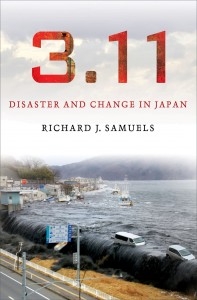
“Samuels draws from historical precedents and a rich and meticulously researched source material, as well as his extensive experience as a long-time observer and commentator on Japan, to produce a compelling and thought-provoking attempt to examine the true impact of the 3.11 disaster.” (Cornell University Press)
By Eden Law (Fukushima-ken, 2010-11) for JQ magazine. Eden currently serves on the JETAA New South Wales committee in Sydney, Australia as the online social media, webmaster and occasional editor. Got feedback? Leave a comment below.
The natural and man-made disaster of the 2011 Tohoku earthquake provoked an intense and visceral response from within and without, which saw an unprecedented level of cooperation between allies and between former enemies, and a united outpouring of human generosity and spirit globally. Little wonder then, that the usual cynical rhetoric was replaced with wholly credulous proclamations of a new age that could be an economic, technological, political and social rebirth of a nation.
“We expect a lot from crises,” author Richard J. Samuels notes in 3.11: Disaster and Change in Japan’s preface, and confesses to have himself been caught up in that same wave of optimism. What would the actual consequences be from the disaster? Would it bring a new era of “revival,” one of a number of slogans touted around Japan in the months following 3.11, or would the goodwill and its accompanying momentum evaporate in the face of reality that brings with it the problems of coping and dealing with a humanitarian disaster?
Samuels draws from historical precedents and a rich and meticulously researched source material, as well as his extensive experience as a long-time observer and commentator on Japan, to produce a compelling and thought-provoking attempt to examine the true impact of the 3.11 disaster. Starting with a description of the state of Japan around the time of the event, he describes a country in the economic doldrums, far from its position that it occupied decades earlier as an economic powerhouse that was the envy (and fear) of the developed world. Politically, Japan’s government had become a circus of ever-changing prime ministers, resulting in low public confidence in its leaders. Little wonder, then, that when the calamity of March 11th struck, the expectation and need for change seemed especially urgent and indeed, possible, more than at other time in recent Japanese history.
The 113 Project: Tohoku Film Series

JET alum featured on ABC News for building tsunami-proof ark
Thanks to JETAA DC’s Mac Maloney for alerting JETwit to this:
Fukushima JET alum Chris Robinson, former art director for Facebook who lives in Palo Alto, CA, is featured in this ABC News segment. It explains how he lived in Fukushima during the tsunami and how a few years later he decided to build an ark in the event of a tsunami. Notably, he specifically mentions the JET Program in the interview. Very cool video. Have a look:
http://news.yahoo.com/video/modern-day-noah-makes-tsunami-154204077.html
More photos here: http://architizer.com/blog/tsunami-pod/
Interview with Chris in Wired here: http://www.wired.com/2014/03/tsunami-lifeboat/
And here’s Chris’ blog, Tsunamiball: http://tsunamiball.com/
More video, from the Wired interview that explains the details of the ark:
JET Community Helps Raise Nearly $50,000 to Support Ishinomaki Students
Taken from the JETAA USA website:
Update on JETs Rally for Tohoku Fundraiser
Tuesday, March 11th marked the 3-year anniversary of the worst disaster to hit Japan in recent history. 3.11 is a date that few people connected with Japan will ever forget. This is particularly true for alumni of the Japan Exchange and Teaching Program (JET Program) – a unique program organized by the Japanese government that hires recent college graduates from all over the world to be assistant language teachers and international relations coordinators for local prefectural governments.
During the earthquake and tsunami of March 11, 2011, two JET participants lost their lives: Monty Dickson and Taylor Anderson. The families of these JETs have worked hard to share their stories and help the devastated communities where their loved ones lived and died. In particular, the Taylor Anderson Memorial Fund was created to support the students and schools in Ishinomaki and the Tohoku region.
Since 2011 JET participants and alumni worldwide have also worked to support the disaster response, so far raising over $500,000 for the relief and recovery effort. As part of this effort the JET Alumni Association USA created a relief fund that has distributed almost $90,000 in grants for educational programs in the disaster zone.
This year, JETs mobilized again to support the Taylor Anderson Memorial Fund with an online fundraising campaign entitled JETs Rally for Tohoku. In the first 24 hours, starting at midnight on March 11, 2014, Japan time, JET alumni, current JET participants, and friends around the world contributed more than $20,000 through Global Giving, an internationally recognized donation website. These funds were raised through social media and word of mouth, as well as through events in San Francisco and elsewhere around the United States.
By March 18, one week later, a total of 333 people had donated $24,238. Global Giving has pledged to match these donations, bringing the total mobilized to more than $48,000 — a formidable sum demonstrating the commitment of the global JET community to the recovery of the Tohoku region. These funds will be used for a series of initiatives supported by the Taylor Anderson Memorial Fund: a community library for students in hard-hit Ishinomaki, scholarships for local students, and PTSD training to assist area residents.
The JETs Rally for Tohoku fundraising website on Global Giving will be left open for regular donations which means JETs can continue to spread the word, raise funds and support the people of Japan – a country close to all of their hearts.
For more information, please visit:
· JETs Rally for Tohoku
· Taylor Anderson Memorial Fund
· JET Alumni Association USA
· JET Program
Questions can be directed to Casey Marie Mochel at us1.jetaausa [at] gmail.com
$10K in Matching Funds for Tohoku Relief Still Remains!
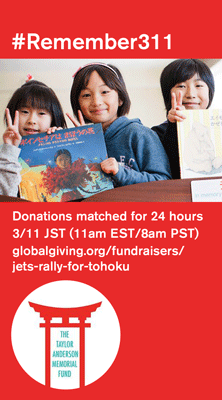 If you’d still like to donate to the Taylor Anderson Memorial Fund (TAMF) in support of Tohoku relief efforts, there’s still time! $10,000 of matching funds remains but will no longer be available in a few days.
If you’d still like to donate to the Taylor Anderson Memorial Fund (TAMF) in support of Tohoku relief efforts, there’s still time! $10,000 of matching funds remains but will no longer be available in a few days.
Donation website: http://www.globalgiving.org/fundraisers/jets-rally-for-tohoku/
The JET/JET Alum community has already come through to an inspiring extent, raising $23,968 for the TAMF through Global Giving. This is already beyond prior expectations, and the Anderson family (which on Thursday attended a showing of “Live Your Dream: The Taylor Anderson Story“at the Council on Foreign Relations which included State Department and Japanese Embassy representatives as well as a strong JETAA DC crew) has been extremely appreciative.
But if you haven’t had a chance to donate yet or you feel like making another donation, please know that for the next day or two matching funds still remain.
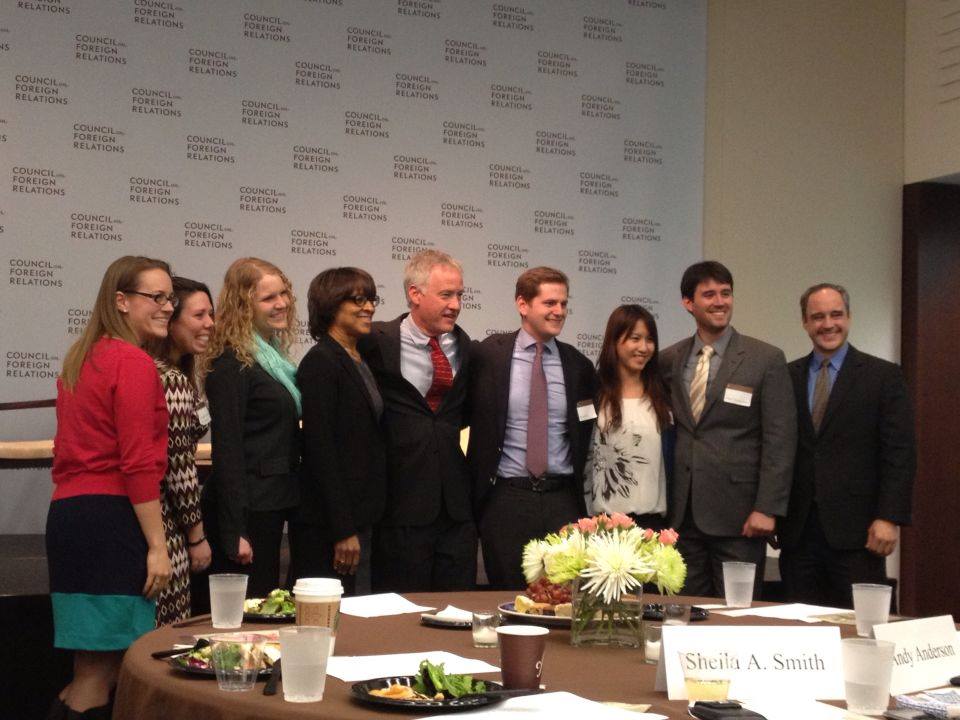
Thursday’s showing of “Live Your Dreams: The Taylor Anderson Story” at the Council on Foreign Relations. Those pictured include Andy Anderson (middle), Paige Cottingham-Streater (middle-left), Jim Gannon (right) and JETAA DC’s Joanna Blatchly, Leigh Ann Mastrini, Rebeka Solem, Joy Young, and Paul Champaloux.
Japan Time: Over 30% of 3/11 kids hit by PTSD
Thanks to Andy Anderson for sharing the link to this article. This is one of the big reasons why support for Tohoku continues to be extremely helpful even 3 years after the 3/11 Disaster.
http://www.japantimes.co.jp/news/2014/03/02/national/over-30-of-311-kids-hit-by-ptsd/#.Ux8-c2RATDk

